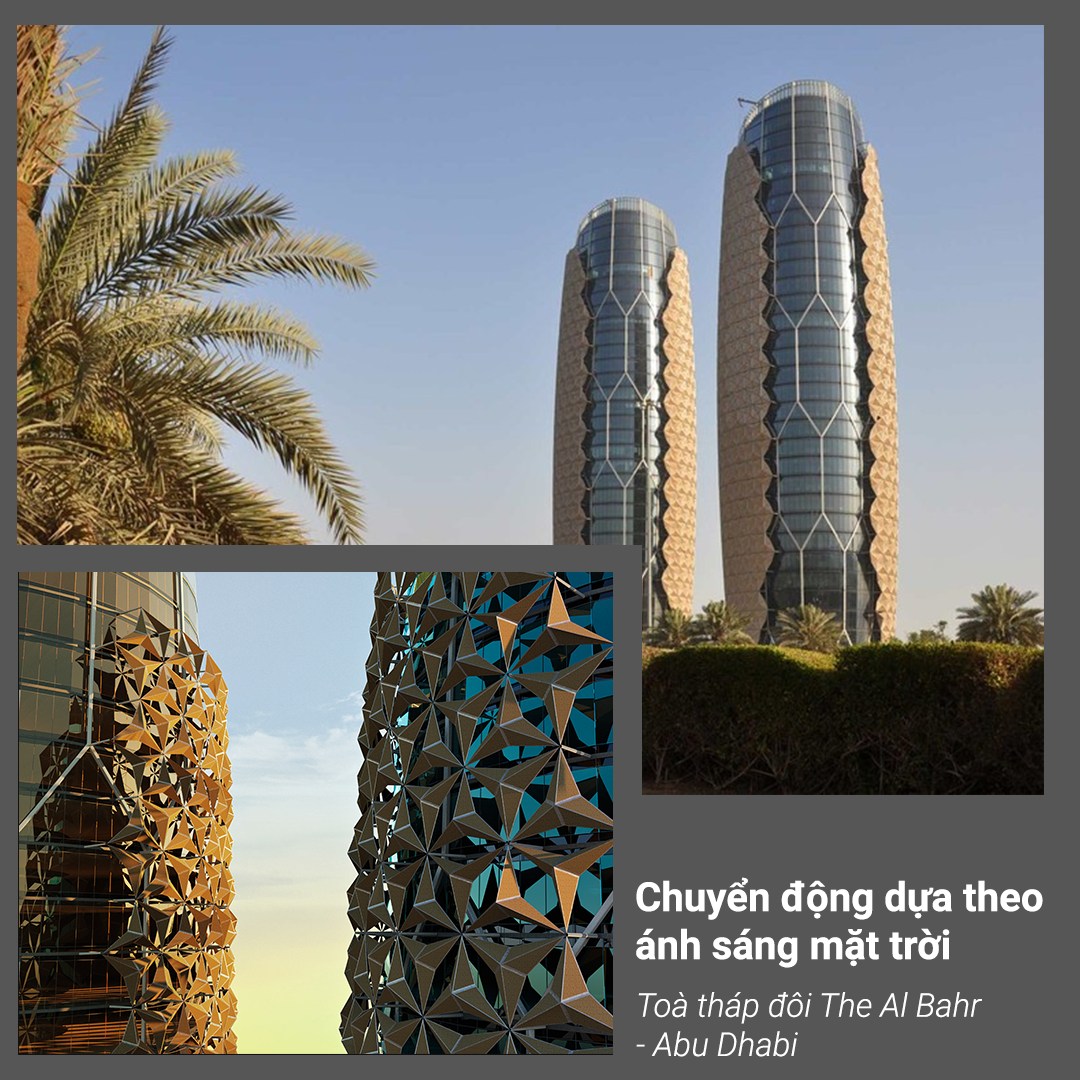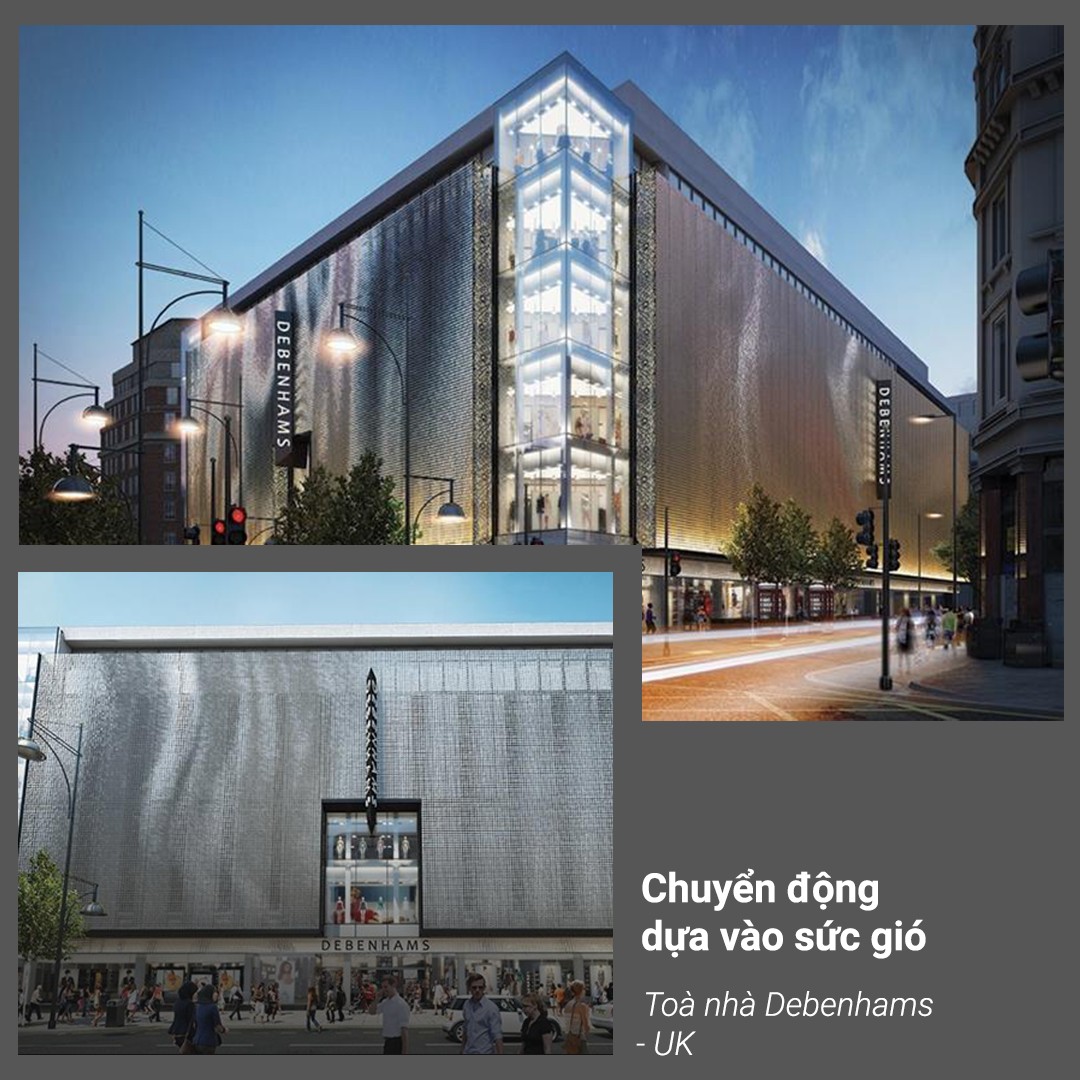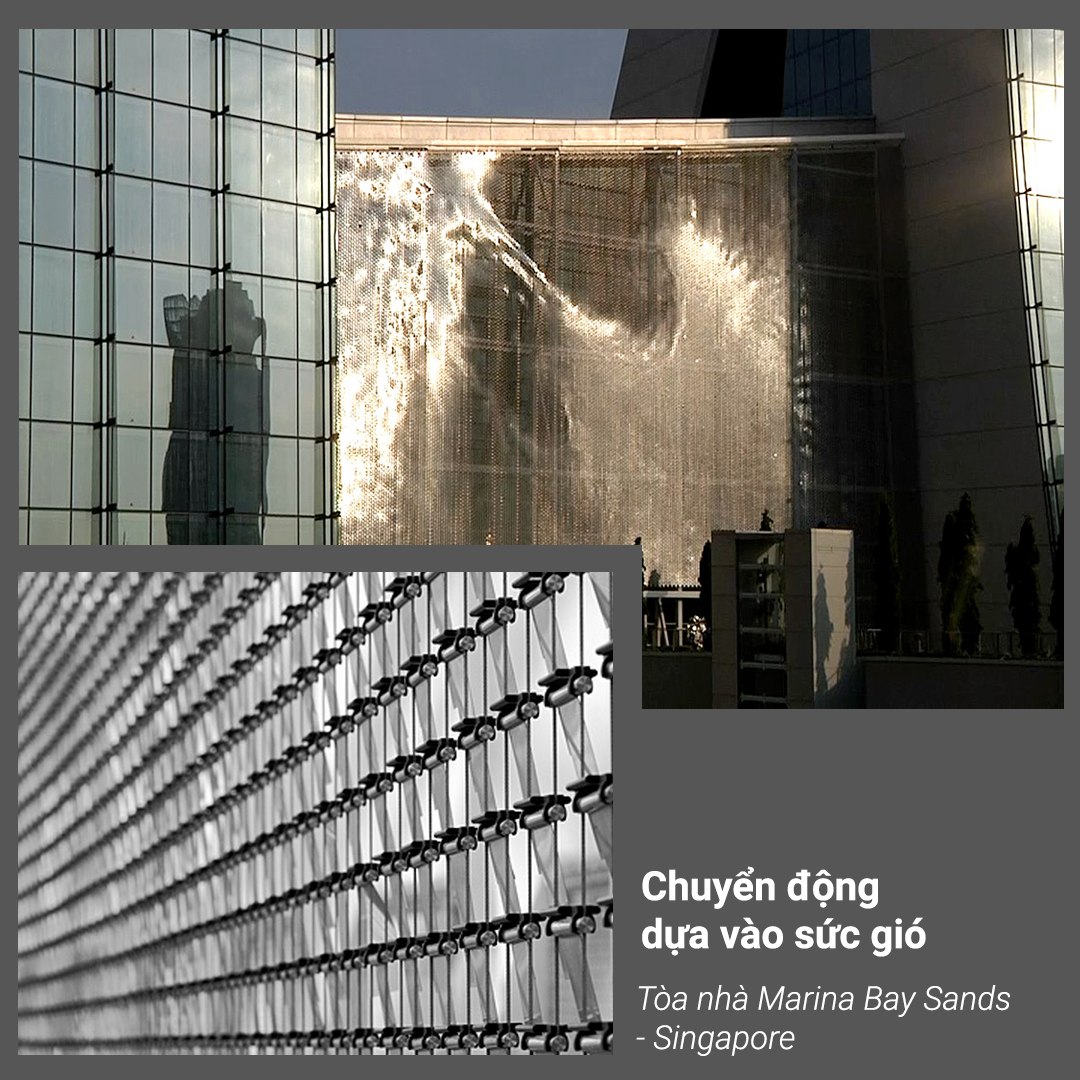Kinetic façade - where liveliness sways

Kinetic façade is the one that allows movement to occur on building’s partial surface without affecting the the whole structure. Changes on façade result from its interaction with light, convection, energy or even building information.
Besides the aesthetic effect from non-stop movements, the kinetic façade also helps regulate the amount of solar radiation and air circulation, while improves the microclimate in the interior space. Nowadays, advances in materials and building management technology allow programming façade's movements to adapt to time factors and external environments.
Join BM Windows in constantly updating impressive façade trends.
1. Adaptation to the sunlight
FLARE façade (designed by Germany-based studio WHITEvoid) consists of stainless steel shingles tilted downwards by a computer-controlled pneumatic piston, which helps reduce sunlight heat.

Photo by: WHITEvoid
FLARE façade (designed by Germany-based studio WHITEvoid) consists of stainless steel shingles tilted downwards by a computer-controlled pneumatic piston, which helps reduce sunlight heat.

Photo by: WHITEvoid
The Al Bahr Towers in Abu Dhabi has a computer-controlled façade made of umbrella-like panels. These panels open and close throughout the day in response to the sun’s movement, giving optimal shading and allowing light to enter the building as required.

Photo by: ArchDaily

Photo by: ArchDaily
2. Adaptation to the wind speed
Located on Oxford Street, Debenhams has its façade made up of 185,000 aluminium shingles which can move independently with the flow of wind to create a fluid or ripple effect across the entire surface, as well as providing some protection against rain.

Photo by: Building UK
Located on Oxford Street, Debenhams has its façade made up of 185,000 aluminium shingles which can move independently with the flow of wind to create a fluid or ripple effect across the entire surface, as well as providing some protection against rain.

Photo by: Building UK
The lobby of Marina Bay Sands, Singapore is covered by a kinetic louvre system, which sways in the wind and reveals the patterns of the wind.

Photo by: Nedkahn

Photo by: Nedkahn





